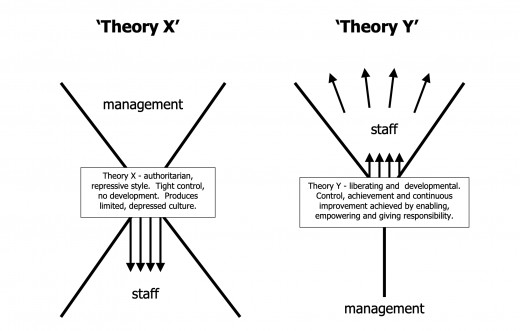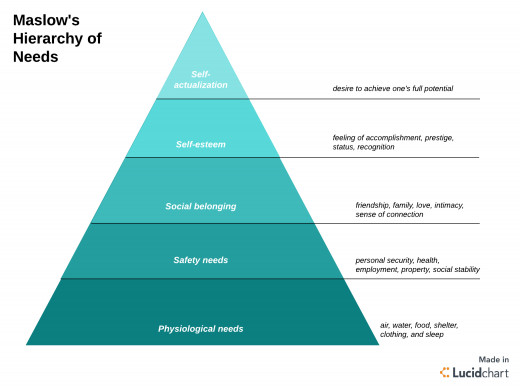McGregor's Management Theory
McGregor's Management Theory
In 1960, Douglas McGregor created the X and Y theories that defined the 2 most common aspects of human behavior. According to McGregor, the perception of a manager towards the attitude and behavior of their staff is influenced by the assumption of X and Y set types.

Douglas Mcgregor's X and Y theories are widely used by managers in many different organizations
Assumption of Theory X
A normal employee, intrinsically, dislikes the job that he/she is doing and will try to avoid any tasks which were given to them. Since the employee refuses to accept responsibilities, he/she will have to be persuaded, forced or be given a warning so that the company's objectives could be realized.
The manager would have to give extra supervision to these types of employees. In addition to that, the manager must be stern to these types of individuals. Naturally, X type employees abhor responsibilities, dislike changes in their working environment and need constant guidance to accomplish their tasks.
X type employees abhor responsibilities, are indifferent to changes, and need constant guidance from their managers.
Assumption of Theory Y
Employees with Y characteristics feel that their responsibilities were not burdensome and just normal. They use their physical and mental strength in accordance with the amount of workload which they were given.
Y employees don't need guidance, orders, forcefulness or warnings to work, but typically very independent and innovative if they are dedicated and honest to achieve the vision set by their organization.
If their career can give them enough satisfaction and rewards, these will make the Y employee continuously loyal and committed to their respective organizations.
The Y employee can also identify their actual responsibilities. In addition, these employees will also look for other tasks to do along with their original duties. These type of employees have the necessary skills, capabilities, creativity, logical thinking and competitiveness to be utilized by their managers to solve problems which arise in their organizations.
As a conclusion, we can say that the X theory gives a pessimistic impression towards the abilities and behaviour of an employee while Y theory gives an optimistic impression towards the capabilities of its employees.
Differences between X and Y type employees
Theory X
| Theory Y
|
|---|---|
1. Employee dislikes job and will try to avoid it
| 1. Employees treats their responsibilities the same as their rest and leisure time
|
2. Motivated by coercion, must be tightly monitored
| 2. Motivated by clear and concise orders
|
3. Employee shuns responsibilities and formal orders
| 3. Employee learns to receive orders and strives to be responsible
|
4. Less ambitious
| 4. Able to make innovative judgment
|

Y types of employees were generally more cherished by their organization compared to X type
Implications of X and Y Theories
There are still several organizations that use the X Theory today. X theory recommends mind control and tight supervision. X theory implies that an employee is unable to accept changes that occur in an organization. So, this theory did not support innovation
In contrast, many organizations adopt Y theory techniques. Y theory implies that managers/bosses should provide a conducive working environment to give opportunities to their employees to take their initiatives and be more independent.
Employees must also be given the chance to contribute to the development of their organizations. Y theory supports separation of power, teamwork, and collective decision making for the good of their organizations.
Y theory searches intensively to get the best ways for an employee to make a meaningful contribution to their working place. This theory harmonizes and matches the needs and aspirations of employees to that of their organizations.
Relating to Maslow's Theory of Hierarchy, it can be said that the X theory is based on assumption that employees prioritize physiological needs (to earn enough salary to feed themselves or their families) and security needs (to put a roof over their head).
Meanwhile, the Y theory is based on the assumption that social needs, self-esteem, and self-actualization (higher domains in Maslow's Hierarchy compared to physiological and security needs) dominates these type of employees.
As a conclusion, Douglas McGregor felt that the Y theory is more useful and reasonable compared to the X theory. So, McGregor suggested good team spirit, tasks which can stimulate people's mind and the participation of all in decision- making process of an organization.

© 2019 Nagendra Kumar








